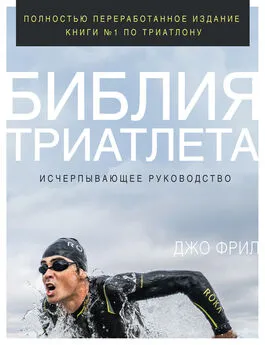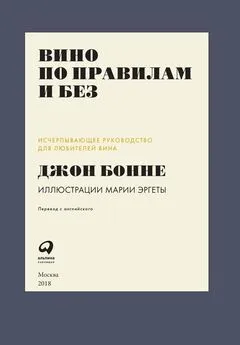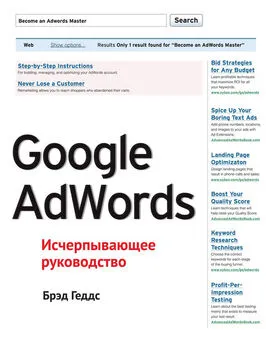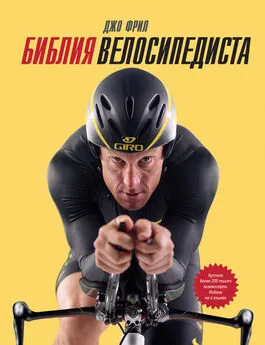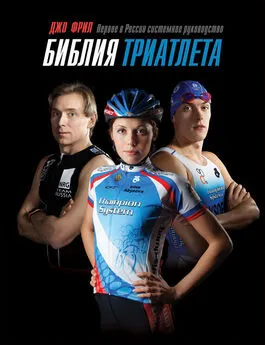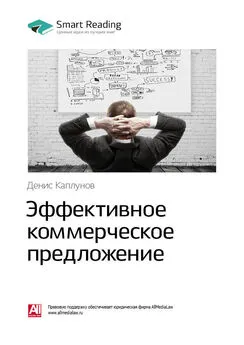Джо Фрил - Библия триатлета. Исчерпывающее руководство
- Название:Библия триатлета. Исчерпывающее руководство
- Автор:
- Жанр:
- Издательство:Литагент МИФ без БК
- Год:2018
- Город:Москва
- ISBN:978-5-00117-314-4
- Рейтинг:
- Избранное:Добавить в избранное
-
Отзывы:
-
Ваша оценка:
Джо Фрил - Библия триатлета. Исчерпывающее руководство краткое содержание
Книга обязательна к прочтению для триатлетов-любителей и профессионалов, а также тренеров по триатлону.
Библия триатлета. Исчерпывающее руководство - читать онлайн бесплатно ознакомительный отрывок
Интервал:
Закладка:
Mujika, I., J. C. Chatard, T. Busso, A. Geyssant, F. Barale, and L. Lacoste. “Effects of Training on Performance in Competitive Swimming”. Canadian Journal of Applied Physiology (1995) 20 (4): 395–406.
Munoz, I., S. Seiler, J. Bautista, J. Espana, E. Larumbe, and J. Esteve-Lanao. “Does Polarized Training Improve Performance in Recreational Runners?” International Journal of Sports Physiology and Performance (2013) 9 (2): 265–272.
Neal, C. M., A. M. Hunter, L. Brennan, A. O’Sullivan, D. L. Hamilton, G. DeVito, and S. D. Galloway. “Six Weeks of a Polarized Training Intensity Distribution Leads to Greater Physiological and Performance Adaptations than a Threshold Model in Trained Cyclists”. Journal of Applied Physiology (2013) 114 (4): 461–471.
Ready, E. A., and H. A. Quinney. “Alterations in Anaerobic Threshold as the Result of Endurance Training and Detraining”. Medicine and Science in Sports and Exercise (1982) 14 (4): 292–296.
Seiler, S. “What Is Best Practice for Training Intensity and Duration Distribution in Endurance Athletes?” International Journal of Sports Physiology and Performance (2010) 5 (3): 276–291.
Seiler, S., and G. Kjerland. “Quantifying Training Intensity Distribution in Elite Endurance Athletes: Is here Evidence for an ‘Optimal’ Distribution?” Scandinavian Journal of Medicine & Science in Sports (2006) 16 (1): 49–56.
Seiler, S., and E. Tonnessen. “Intervals, Thresholds, and Long Slow Distance: he Role of Intensity and Duration in Endurance Training”. Sportscience (2009) 13: 32–53.
Skinner, J., and T. McLellan. “The Transition from Aerobic to Anaerobic Metabolism”. Research Quarterly for Exercise and Sport (1980) 51 (1): 234–248.
Swensen, T. C., C. R. Harnish, L. Beltman, and B. A. Keller. “Noninvasive Estimation of the Maximal Lactate Steady State in Trained Cyclists”. Medicine and Science in Sports and Exercise (1999) 31 (5): 742–746.
Jones, G. “How the Best of the Best Get Better and Better”. Harvard Business Review (2008) 86 (6): 123–127, 142.
McGehee, J. C., C. J. Tanner, and J. A. Houmard. “A Comparison of Methods for Estimating the Lactate threshold”. Journal of Strength and Conditioning Research (2005) 19 (3): 553–558.
Millet, G. P., V. E. Vleck, and D. J. Bentley. “Physiological Differences Between Cycling and Running: Lessons from Triathletes”. Sports Medicine (2009) 39 (3): 179–206.
O’Toole, M. L., and P. S. Douglas. “Applied Physiology of Triathlon”. Sports Medicine (1995) 19 (4): 251–267.
Beneke, R., R. M. Leithauser, and Q. Ochentel. “Blood Lactate Diagnostics in Exercise Testing and Training”. International Journal of Sports Physiology and Performance (2011) 6 (1): 8–24.
Cairns, S. P. “Lactic Acid and Exercise Performance: Culprit or Friend?” Sports Medicine (2006) 36 (4): 279–291.
Coyle, E. F. “Integration of the Physiological Factors Determining Endurance Performance Ability”. Exercise, Sport, and Science Review (1995) 23: 25–63.
Coyle, F. F., M. E. Feltner, S. A. Kantz, M. T. Hamilton, S. J. Montain, A. M. Baylor, L. D. Abraham, and G. W. Petrek. “Physiological and Biomechanical Factors Associated with Elite Endurance Cycling Performance”. Medicine and Science in Sports and Exercise (1991) 23 (1): 93–107.
Gleim, G. W., N. S. Stachenield, and J. A. Nicholas. “The Influence of Flexibility on the Economy of Walking and Jogging”. Journal of Orthopedic Research (1990) 8 (6): 814–823.
Grossl, T., R. Dantas De Lucas, K. Mendes De Souza, and G. A. Guglielmol. “Maximal Lactate Steady-State and Anaerobic Thresholds from Different Methods in Cyclists”. European Journal of Sport Science (2012) 12 (2): 161–167.
Hunter, G. R., K. Katsoulis, J. P. McCarthy, W. K. Ogard, M. M. Bamman, D. S. Wood, J. A. Den, Hollander, T. E. Blandeau, and B. R. Newcomer. “Tendon Length and Joint Flexibility Are Related to Running Economy”. Medicine and Science in Sports and Exercise (2011) 43 (8): 1492–1499.
Larsen, H. B. “Kenyan Dominance in Distance Running”. Comparative Biochemistry and Physiology Part A: Molecular & Integrative Physiology (2003) 136 (1): 161–170.
Lucia, A., J. Hoyos, M. Perez, A. Santalla, and J. L. Chicharro. “Inverse Relationship Between VO 2max and Economy/Efficiency in World-Class Cyclists”. Medicine and Science in Sports and Exercise (2002) 34 (12): 2079–2084.
McGehee, J., C. Tanner, and J. Houmard. “A Comparison of Methods for Estimating the Lactate Threshold”. Journal of Strength and Conditioning Research (2005) 19 (3): 553–558.
Midgley, A. W., and L. R. Naughton. “Time at or Near VO 2max During Continuous and Intermittent Running. A Review with Special Reference to Considerations for the Optimization of Training Protocols to Elicit the Longest Time at or Near VO 2max”. Journal of Sports Medicine and Physical Fitness (2006) 46 (1): 1–14.
Midgley, A. W., L. R. Naughton, and M. Wilkinson. “Is here an Optimal Training Intensity for Enhancing the Maximal Oxygen Uptake of Distance Runners?: Empirical Research Findings, Current Opinions, Physiological Rationale and Practical Recommendations”. Sports Medicine (2006) 36 (2): 117–132.
Millet, G. P., V. E. Vleck, and D. J. Bentley. “Physiological Differences Between Cycling and Running: Lessons from Triathletes”. Sports Medicine (2009) 39 (3): 179–206.
Myers, J., and E. Ashley. “Dangerous Curves. A Perspective on Exercise, Lactate, and the Anaerobic Threshold”. Chest (1997) 111 (3): 787–795.
Nicholls, J. F., S. L. Phares, and M.J. Buono. “Relationship Between Blood Lactate Response to Exercise and Endurance Performance in Competitive Female Master Cyclists”. International Journal of Sports Medicine (1997) 18 (6): 458–463.
Pate, R. R., and J. D. Branch. “Training for Endurance Sport”. Medicine and Science in Sports and Exercise (1992) 24 (9): S340–S343.
Saunders, P. U., D. B. Pyne, R. D. Telford, and J. A. Hawley. “Factors Affecting Running Economy in Trained Distance Runners”. Sports Medicine (2004) 34 (7): 465–485.
Saunders, P. U., R. D. Telford, D. B. Pyne, E. M. Peltola, R. B. Cunningham, C. J. Gore, and J. A. Hawley. “Short-Term Plyometric Training Improves Running Economy in Highly Trained Middle and Long Distance Runners”. Journal of Strength and Conditioning Research (2006) 20 (4): 947–954.
Slawinski, J., A. DeMarle, J. P. Koralsztein, and V. Billat. “Effect of Supra-Lactate Threshold Training on the Relationship Between Mechanical Stride Descriptors and Aerobic Energy Cost in Trained Runners”. Archives of Physiology and Biochemistry (2001) 109 (2): 110–116.
Stendel-Numbers, K. L., T. D. Weaver, and C. M. Wall-Scheler. “The Evolution of Human Running: Effects of Changes in Lower-Limb Length on Locomotor Economy”. Journal of Human Evolution (2007) 53 (2): 191–196.
Swensen, T. C., C. R. Harnish, L. Beltman, and B. A. Keller. “Noninvasive Estimation of the Maximal Lactate Steady State in Trained Cyclists”. Medicine and Science in Sports and Exercise (1999) 31 (5): 742–746.
Turner, A. M., M. Owings, and J. A. Schwane. “Improvement in Running Economy After 6 Weeks of Plyometric Training”. Journal of Strength and Conditioning Research (2003) 17 (1): 60–67.
Fry, R. W., A. R. Morton, and D. Keast. “Periodisation of Training Stress – A Review”. Canadian Journal of Sport Sciences (1992) 17 (3): 234–240.
Gaskill, S. E., R. C. Serfass, D. W. Bacharach, and J. M. Kelly. “Responses to Training in Cross-Country Skiers”. Medicine and Science in Sports and Exercise (1999) 31 (8): 1211–1217.
Hagberg, J. M., R. C. Hickson, A. A. Ehsani, and J. O. Holloszy. “Faster Adjustment to and Recovery from Submaximal Exercise in the Trained State”. Journal of Applied Physiology (1980) 48 (2): 218–224.
Hautala A. J., A. M. Kiviniemi, T. H. Makikallio, H. Kinnunen, S. Nissila, H. V. Huikuri, and M. P. Tulppo. “Individual Differences in the Responses to Endurance and Resistance Training”. European Journal of Applied Physiology (2006) 96 (5): 535–542.
Morton, R. H. “Modeling Training and Overtraining”. Journal of Sports Sciences (1997) 15 (3): 335–340.
Paton, C. D., and W. G. Hopkins. “Seasonal Changes in Power of Competitive Cyclists: Implications for Monitoring Performance”. Journal of Science and Medicine in Sport (2005) 8 (4): 375–381.
Banister, E. W., R. H. Morton, and J. Fitz-Clarke. “Dose/Response effects of Exercise Modeled from Training: Physical and Biochemical Measures”. Annals of Physiology and Anthropology (1992) 11 (3): 345–356.
Busso, T., R. Candau, and J. R. Lacour. “Fatigue and Fitness Modelled from the Effects of Training on Performance”. European Journal of Applied Physiology and Occupational Physiology (1994) 69 (1): 50–54.
Costill, D. L., R. Thomas, R. A. Roberts, D. Pascoe, C. Lambert, S. Barr, and W. J. Fink. “Adaptations to Swimming Training: Influence of Training Volume”. Medicine and Science in Sports and Exercise (1991) 23 (3): 371–377.
Esteve-Lanao, J., C. Foster, S. Seiler, and A. Lucia. “Impact of Training Intensity Distribution on Performance in Endurance Athletes”. Journal of Strength and Conditioning Research (2007) 21 (3): 943–949.
Esteve-Lanao, J., A. F. San Juan, C. P. Earnest, C. Foster, and A. Lucia. “How Do Endurance Runners Actually Train? Relationship with Competition Performance”. Medicine and Science in Sports and Exercise (2005) 37 (3): 496–504.
Fitz-Clarke J. R., R. H. Morton, and E. W. Banister. “Optimizing Athletic Performance by Influence Curves”. Journal of Applied Physiology (1991) 71 (3): 1151–1158.
Gaskill, S. E., R. C. Serfass, D. W. Bacharach, and J. M. Kelly. “Responses to Training in Cross-Country Skiers”. Medicine and Science in Sports and Exercise (1999) 31 (8): 1211–1217.
Gomes, P. S., and Y. Bhambhani. “Time Course Changes and Dissociation in VO 2max at Maximum and Submaximum Exercise Levels as a Result of Training in Males”. Medicine and Science in Sports and Exercise (1996) 28 (5): S81.
Hautala, A. J., A. M. Kiviniemi, T. H. Makikallio, H. Kinnunen, S. Nissila, H. V. Huikuri, and M. P. Tulppo. “Individual Differences in the Responses to Endurance and Resistance Training”. European Journal of Applied Physiology (2006) 96 (5): 535–542.
Helgerud J., K. Hoydal, E. Wang, T. Karlsen, P. Berg, M. Bjerkaas, T. Simonsen, C. Helgesen, N. Hjorth, R. Bach, and J. Hof. “Aerobic High-Intensity Intervals Improve VO 2max More than Moderate Training”. Medicine and Science in Sports and Exercise (2007) 39 (4): 665–671.
Hellard P., M. Avalos, C. Hausswirth, D. Pyne, J. F. Toussaint, and I. Mujika. “Identifying Optimal Overload and Taper in Elite Swimmers Over Time”. Journal of Sports Science and Medicine (2013) 12 (4): 668–678.
Houmard, J. A. “Impact of Reduced Training on Performance in Endurance Athletes”. Sports Medicine (1991) 12 (6): 380–393.
Laursen, P. B. “Training for Intense Exercise Performance: High-Intensity or High-Volume Training?” Scandinavian Journal of Medicine & Science in Sports (2010) 20 (supplement 2): 1–10.
Laursen, P. B., and D. G. Jenkins. “The Scientific Basis for High-Intensity Interval Training: Optimising Training Programmes and Maximising Performance in Highly Trained Endurance Athletes”. Sports Medicine (2002) 32 (1): 53–73.
Читать дальшеИнтервал:
Закладка:
